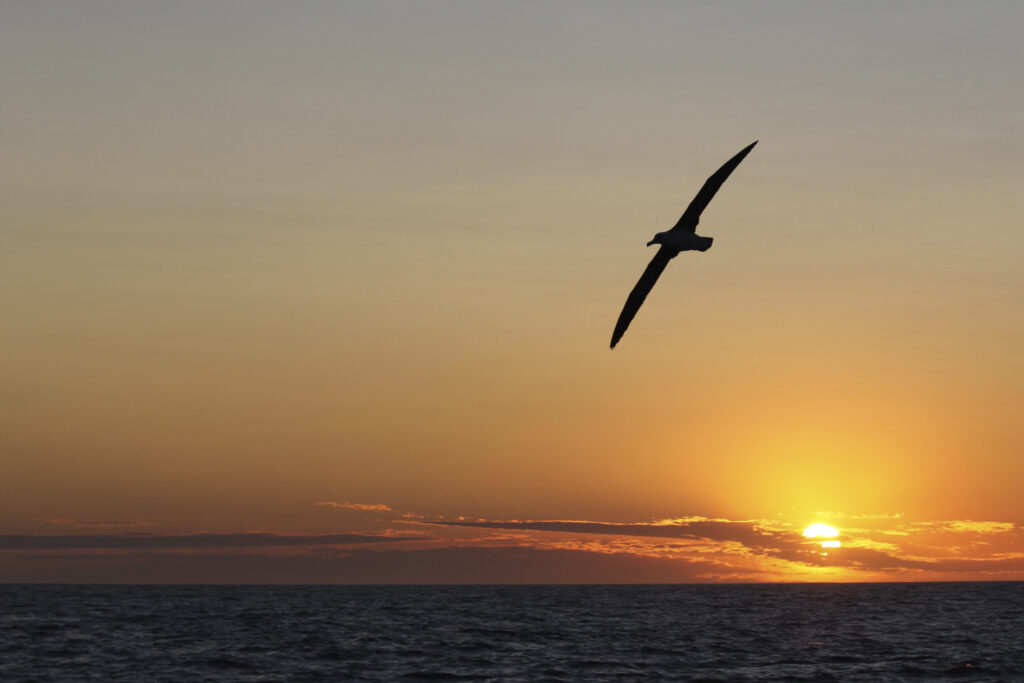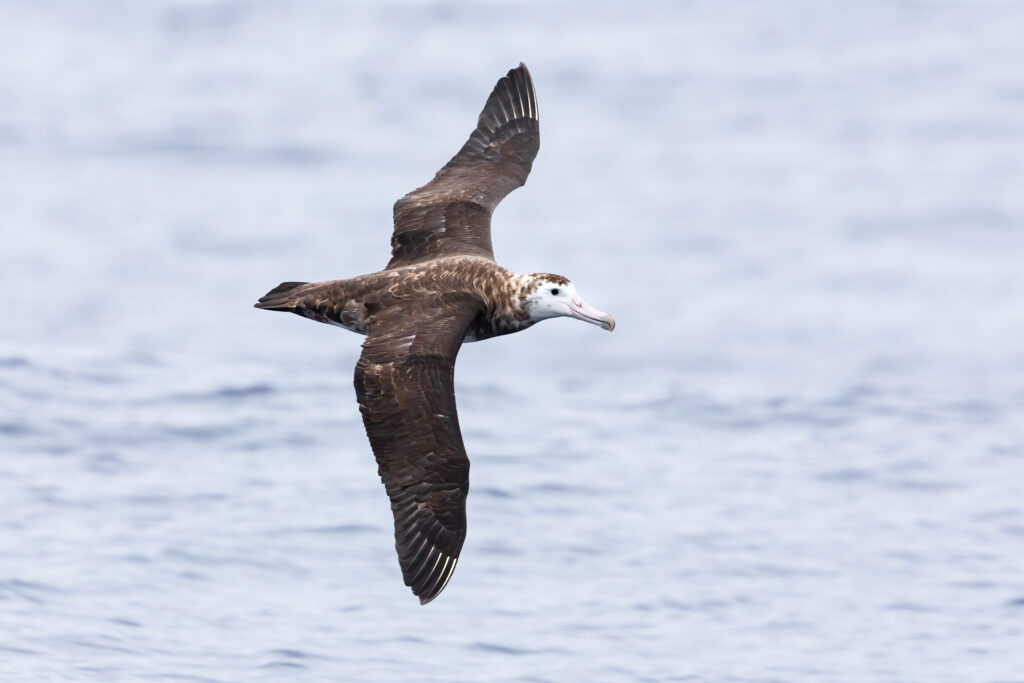New study underlines risk longline vessels pose to threatened albatrosses

New research highlights the staggering footprint of tuna fisheries, most of which operate at the most dangerous time for albatrosses, representing a major threat to these iconic seabirds.
By Liam Hughes
Header image: Albatrosses most actively feed during dusk © RSPB (rspb-images.com)
Albatrosses are awe-inspiring birds, using their gigantic wingspans to soar seemingly effortlessly over the ocean waves, scouring the water’s surface for their next meal. The bait and dead fish surrounding fishing vessels represent a rich feeding ground, often attracting hundreds of these magnificent seabirds. Sadly, for many albatrosses, this meal is often their last. Incidental capture (also known as bycatch) in fishing gear is the most pervasive threat to albatrosses, 15 species of which are considered at risk of extinction .
Longline fisheries are particularly deadly, killing at least 160,000 seabirds every year. Fishing vessels that use this technique set out a main line that can extend up to 100km into the ocean, each with thousands of hooks attached to it. The bait on these hooks often represents an easy meal for albatrosses, mimicking fish swimming close to the water’s surface. However, when the birds snatch onto what seems like unassuming prey, they often get snagged and dragged underwater as the hooks sink.
A new paper published today by researchers from BirdLife International and Global Fishing Watch highlights just how much of threat longline tuna vessels are to albatrosses. By analysing GPS data from nearly 5,000 fishing vessels, the team found that everyday millions of these hooks are deployed. To make matters worse, most of this fishing activity occurs from dawn through to daylight, which coincides with the time albatrosses are actively searching for prey and most vulnerable to being caught.
Troublingly, the paper also shows that just 3% of longline sets occur entirely at night, which is when albatrosses less actively look for food. Night-setting is one of several cost-effective measures groups such as the Albatross Task Force, a team of global bycatch mitigation efforts led by BirdLife International and the RSPB (BirdLife in the UK), encourage fishing fleets to implement – which in some fisheries have reduced bycatch by extraordinary levels.
“Albatross populations are tragically in steep decline, with tens of thousands of birds per year killed by fisheries,” said Oliver Yates, head of the BirdLife International Marine Programme. “This bycatch is completely avoidable, and setting hooks at night is one of the simplest and most effective measures. This study shines an important light on fishing during the darkness.”
“Albatross populations are tragically in steep decline, with tens of thousands of birds per year killed by fisheries. This bycatch is completely avoidable, and setting hooks at night is one of the simplest and most effective measures. This study shines an important light on fishing during the darkness.”Oliver Yates, head of the BirdLife International Marine Programme.
Staggering scale
Monitoring the activities of high seas fisheries, which are those that operate over 200 nautical miles from the coast beyond the national jurisdiction of any country, is notoriously difficult. By their very nature these waters are extremely remote, and vessels often stay out at sea for months at a time. The team therefore used machine learning to process billions of GPS locations from longline vessels to identify when they deploy their hooks. This innovative method offers an avenue for fisheries managers and independent organizations to better understand the activity of these fleets and monitor measures aimed at reducing impacts on threatened species.
“Harnessing satellite data in this way revealed the vast global footprint of longline fishing,” said David Kroodsma, director of research and innovation at Global Fishing Watch. “It also allows us to better understand when these vessels are setting their lines, providing a new management tool to help reduce risks to endangered seabirds.”
And the scale of longline fishing activity they uncovered is truly staggering. Everyday, the researchers found that roughly 1,000 tuna fishing vessels set longlines. With thousands of hooks per line, this equates to billions being put out every year across a vast area of the ocean.
Albatrosses are experts at finding food and can detect fishing vessels up to 30km away. The paper showed that at least some point during the year, approximately 40% of the ocean – an area close to the size of Earth’s entire land mass – comes within 30km of a longline set, representing a significant risk to these seabirds that regularly travel thousands of kilometres. Worryingly, within the ranges of some albatross species this figure is even higher. For instance, 65% of the entire distribution of the Endangered Amsterdam Albatross – a species that may number just 92 adult birds – falls within this 30km ‘danger zone’. To protect these truly magnificent species, the research underscores the urgent need for fisheries to put in place measures that reduce their impact.

‘Global prevalence of setting longlines at dawn highlights bycatch risk for threatened albatross‘ was published in Biological Conservation. Find out more about BirdLife’s Science here.